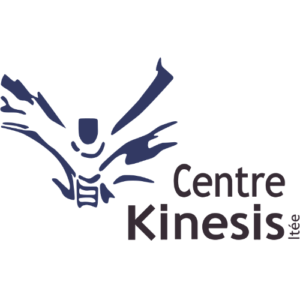Fasciatherapy and myofascial release
Fasciatherapy is a therapeutic approach that focuses on the fascia. Fascia is composed of fibrous connective tissue. It covers, separates, protects, and supports the muscles and organs (viscera) of the human body. These membranes resemble cellophane paper envelopes and facilitate the sliding of different structures. Fascia creates connections between structures and different regions of the body, as they are present from head to toe and from the deepest to the most superficial layers. Fascia forms chains that can lead to tension, pain, or remote compensations. Repetitive movements, poor posture, and chronic pain can generate tension or stiffness in the fascia and its associated chain.
Fascia reacts enormously to stress, not only physical, but also psychological. It is often said that the fascia is a bit like the memory of the body and it demonstrates all the aggressions that the body may have suffered. Intense and difficult to manage emotions as well as unconscious traumas become fixed in the fascia. Unreleased trauma, recent or old, affects the tissue quality and the “mobility” of the fascia – we should rather speak of gliding capacity than of movements. The shocks will generate areas of tension in which circulation, tissue flexibility and vitality will be reduced.
Real life case 1: When I was 11, I injured my right shoulder from overuse and poor technique while swimming on my back. The pain was so sharp it was crippling. The doctor diagnosed me with acute bursitis. So I had to take rest and anti-inflammatories. I stopped swimming afterwards. Despite everything, I sometimes felt a snag, pain and cracking, many years after my initial injury. While taking my fascia therapy course, almost 25 years later, I felt the same pain as in the swimming pool. I had very clear images, memories that came back to me instantly. By releasing the fascia, my shoulder regained its full range of motion and the crackles disappeared. As a bonus, I can now swim on my back without pain!
Real life case 2: I had a client with chronic neck pain and headaches. During the session, she suddenly cried out. By releasing the fascia, we released the traumatic emotional imprint of a car accident that occurred when she was a child and which she did not remember. Her neck tension released in my hands, as if instantly gone. Since then, his headaches have diminished in intensity and frequency and his tensions are much less.
Fasciatherapy and myofascial release look a lot alike. The first approach is intended to be softer and the second more intense and deeper. The one-hour treatment can be performed solely in a fasciatherapy approach or even be combined with other massage techniques.
The therapist will find areas of tension / stiffness / slowdown and thanks to manual techniques (and without oil) of tensioning, mobilization and stretching, he will make the fascias mobile and malleable. This results in better circulation and energy stimulation.
Anyone can benefit from the benefits of fasciatherapy treatment. The main indications are:
- Acute injuries: to decrease inflammation, edema (swelling), pain and speed up the healing process; for example during sprains or tendonitis
- Chronic injuries: back problems, epicondylitis
- Sports injuries
- Tensions / pains related to postures or repetitive movements
- Circulatory problems
- Tensions related to scars
- Gynecological issues: (if therapist treats viscerally)
- Digestive problems: (if therapist treats at the visceral level)
- Scoliosis and other postural problems
- Migraines and headaches
Therapists offering this service
Yanic Szoghy
Alexander Benjamin
Pascale Alexander
Patrick Georgevich
Marieta Tisheva
Salomee Trudel

Leave a Reply
Want to join the discussion?Feel free to Contribute!